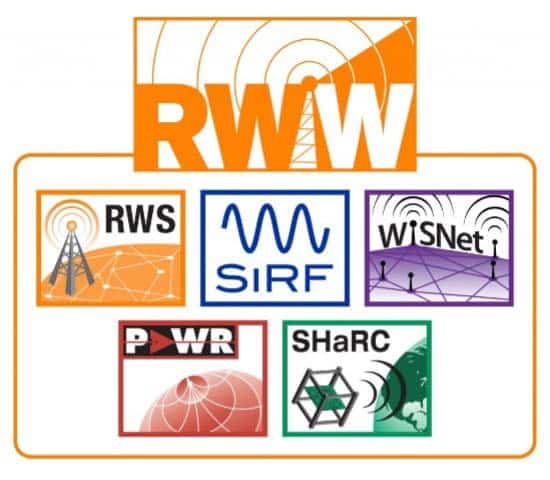20:50 GMT
Competition Results:
ACPR-FoM 1st Place Winner:
Chenhao Chu
University College Dublin, Ireland
Advisor: Professor Anding Zhu
EVM-FoM 1st Place Winner:
Chenhao Chu
University College Dublin, Ireland
Advisor: Professor Anding Zhu
The IEEE MTT-S Microwave High Power Techniques Committee (MTT-12), in collaboration with IEEE Radio & Wireless Week (RWW) and Automatic Radio Frequency Techniques Group (ARFTG), is pleased to announce that all the teams that entered the 17th High Efficiency Power Amplifier (HEPA) Student Design Competition (SDC) will have the opportunity to participate another virtual competition for wideband linearity tests, and the winners of the competition will be featured live at the upcoming IEEE Radio & Wireless Week (RWW), in Las Vegas, Nevada, USA on January 16-19, 2022.
The competition will take place on Friday January 7th, 2022 and will be held virtually. Live measurements of the contestant’s power amplifiers (PA) will be streamed online in real-time. The contestants will be able to participate virtually during the live event. The participating teams will need to confirm the participation and then will be given information on where to send their PAs. The measurements will be performed at the Keysight’s Microwave Measurements Lab streamed live with the participants and the judges’ virtual presence. The information for the live teleconference event will be sent to the participants in advance.
The teams will have the choice of bringing the same PA or an upgraded version. The PAs will be tested using a 100 MHz modulated signal and with digital predistortion (DPD) applied. Detailed requirements and rules are in the next section below. Awards will be given to the best performing prototypes and prizes will be available to all the contestants.
The contest will focus on predistorted PAs having both high efficiency and high linearity under a wideband 100 MHz modulated signal. The contestants are required to design and construct a highly efficient, linear PA at a frequency of their choice between 1.7 GHz and 4 GHz. To qualify for the linearity test, the PA must produce an average output power of at least 32 dBm, but no more than 40 dBm, when excited by the modulated signal consisted of 16 quadrature amplitude modulation (QAM) at the frequency of test. All linearity testing will be conducted using the same signal source. To qualify for the linearity measurement, all PAs must provide a power gain of greater than 11 dB.
Detail Competition Rules:
- The PA design may use any type of technology, but must be the result of new effort, both in the amplifier design and fabrication.
- The PA mechanical design should allow for internal inspection of all relevant components and circuit elements. The RF ports should be SMA female connectors. Bias connections should be banana plugs.
- The PA should require a maximum of two dc supply voltages for operation.
- The PA must operate at a frequency in the range of 1.7 GHz to 4 GHz and have an average output power level when excited by a 100 MHz modulated signal of at least 32 dBm, but no more than 42 dBm at the frequency of test.
- The wideband waveform is a 100 MHz 16 QAM signal sampled at 600 MS/s. The peak-to-average power ratio (PAPR) of the waveform is 6.2 dB.
- All PAs should reach the minimum 32 dBm average output power when excited with a modulated signal of less than 21.8 dBm average power.
- Two PA operating conditions corresponding to adjacent channel power ratio (ACPR) of -33 dBc and -36 dBc will be recorded and entered for the linearization challenge. Amplifiers must need less than 24 dBm average power to reach -33 dBc level of ACPR.
- A DPD model will be trained based on the operating conditions defined in #7.
- Post-DPD linearity and error vector magnitude (EVM) and drain efficiency (DE) will be measured.
- Calculate and record Figure of Merits (FoM):
FoM(ACPR)=ACPR_DPD∙DE (Worst case of lower/upper Adjacent Channel Power Ratio x Drain Efficiency)
FoM(EVM)=EVM_PA/EVM_DPD∙DE (EVM without DPD / EVM with DPD x Drain Efficiency)
Prizes
- Winners will be recognized and announced at the RWW/ARFTG Plenary Session on Tuesday January 18th, 2022.
- The team with the winning PA design in relation to ACPR, as measured live at Keysight’s Microwave Measurements Lab and determined by the judges, will receive a prize of US $500.
- The team with the winning PA design in relation to EVM, as measured live at Keysight’s Microwave Measurements Lab and determined by the judges, will receive a prize of US $500.
- All qualified entries are eligible for $50 gift card per person (excluding winners).
For more information, please directly contact:
Rusty Myers, ARFTG General Co-Chair, rusty.myers@keysight.com
Joel Dunsmore, ARFTG General Chair, joel_dunsmore@keysight.com
Kevin Chuang, RWW General Chair, kevinchuang@ieee.org
Sponsored by


